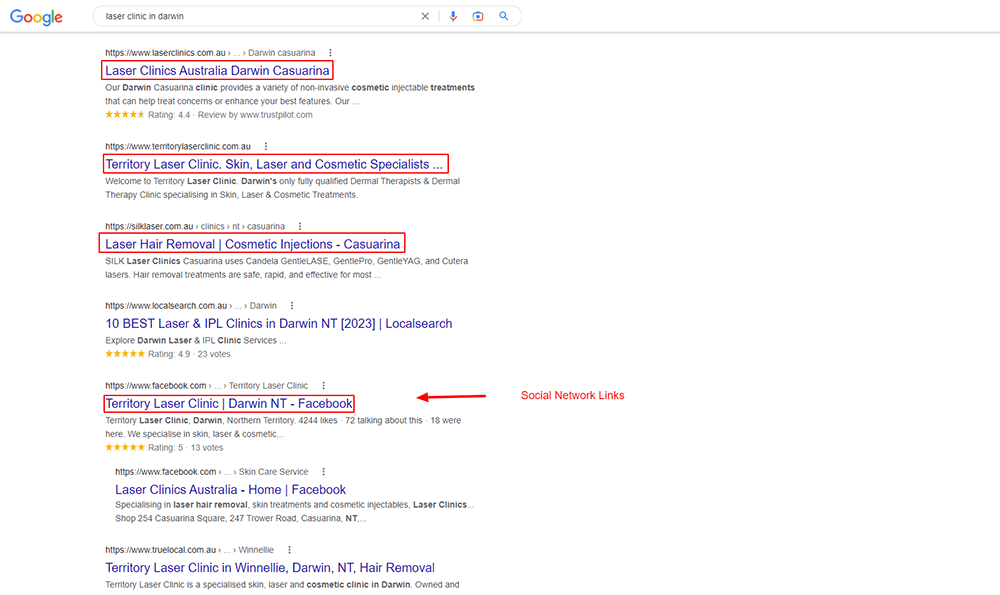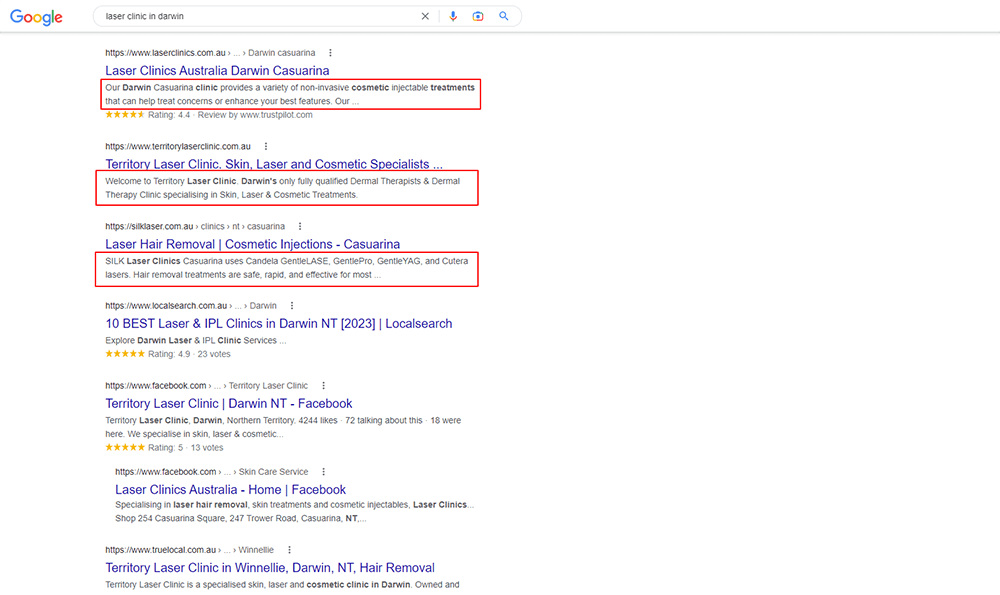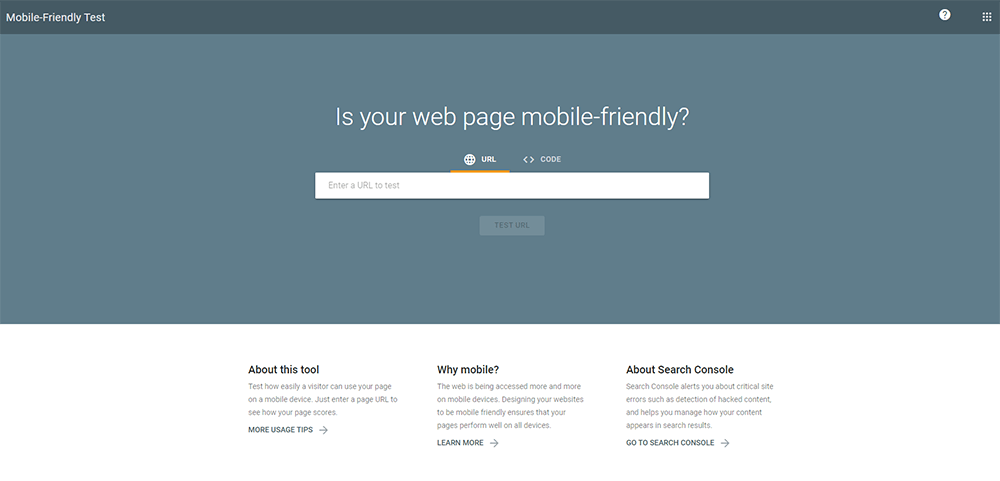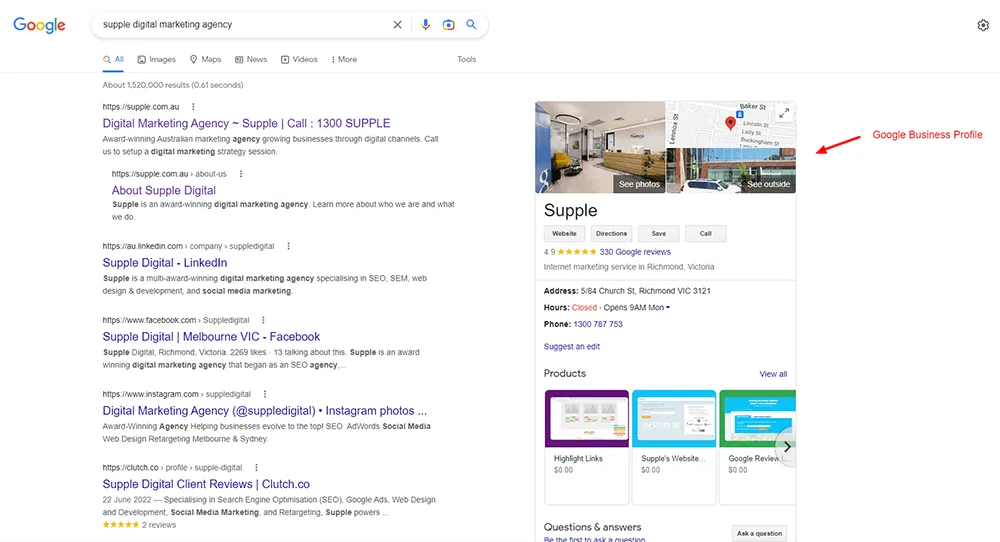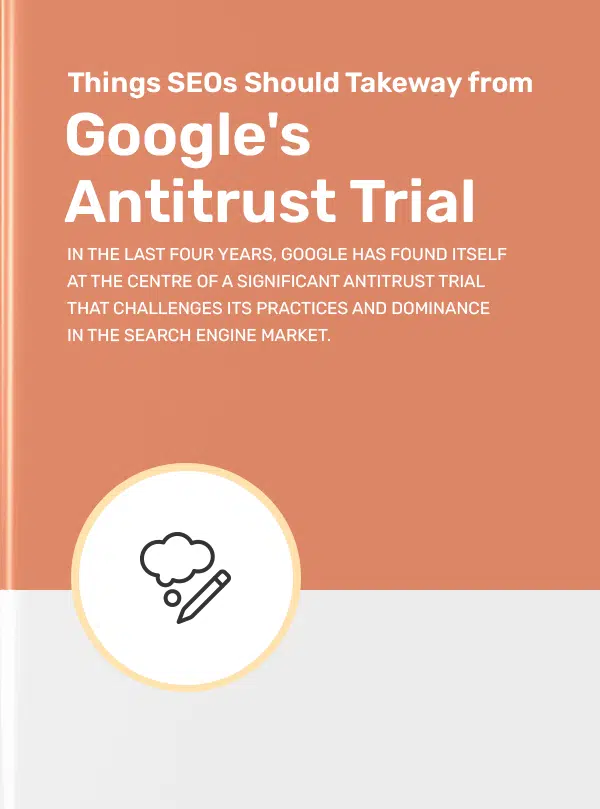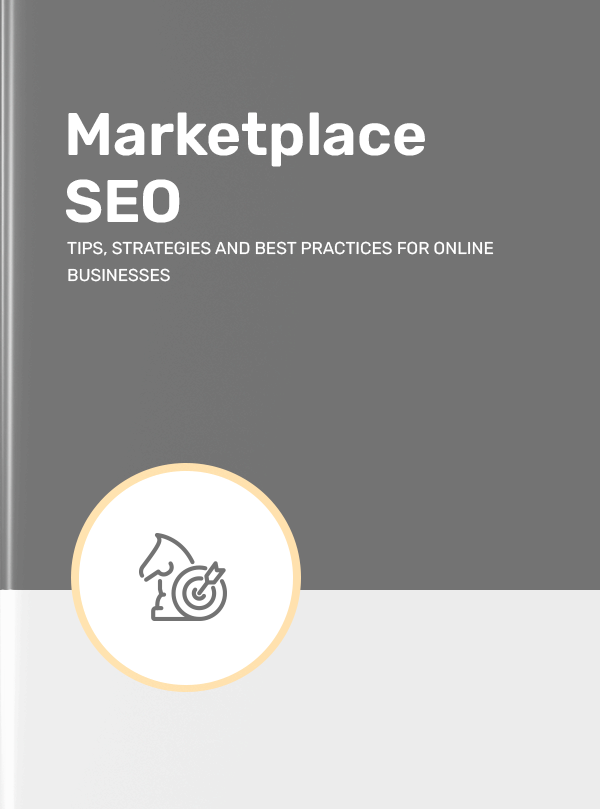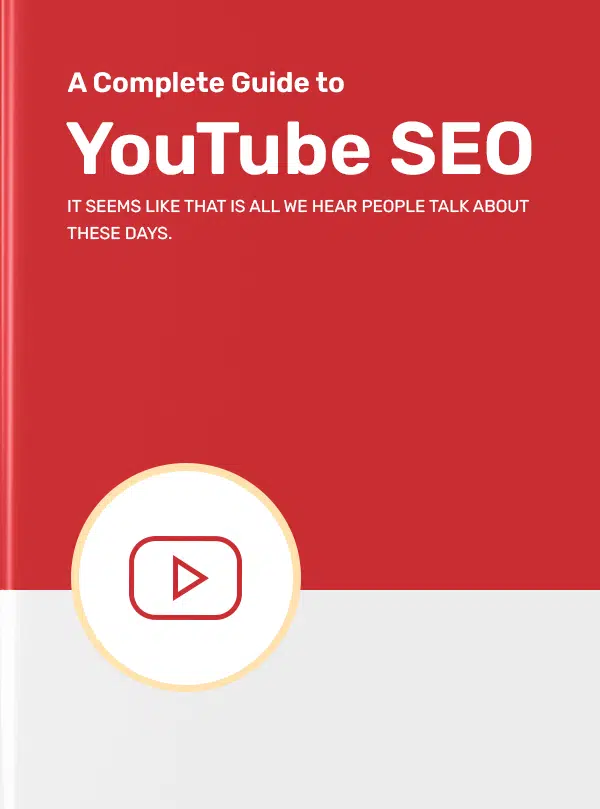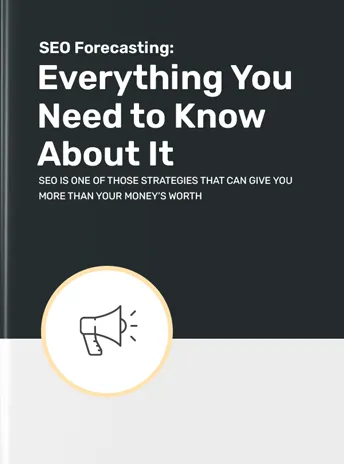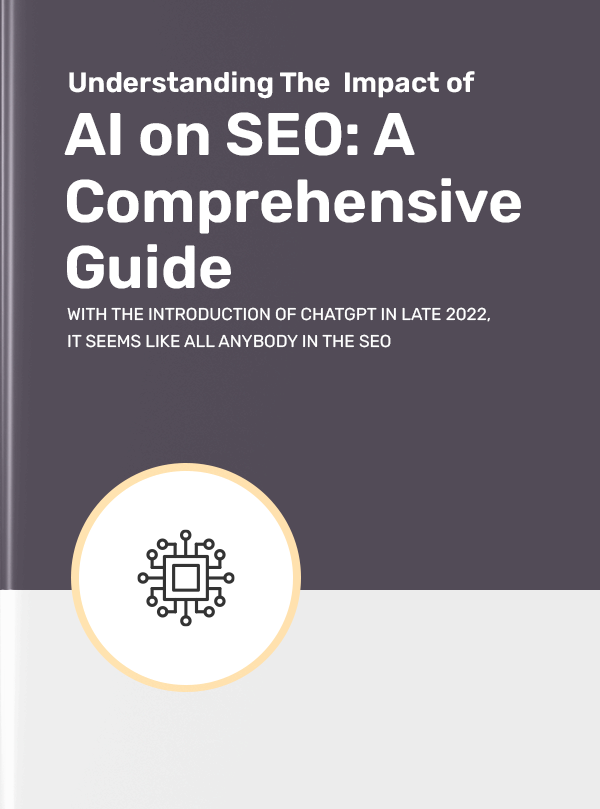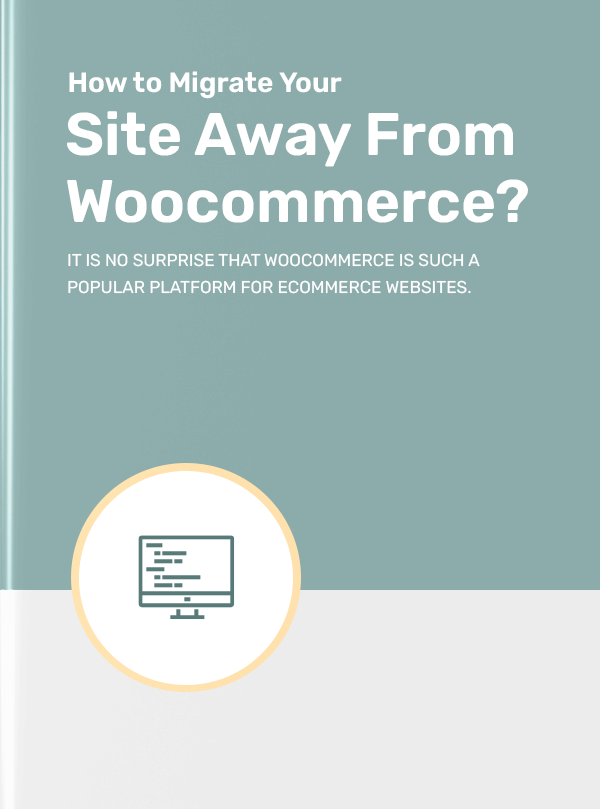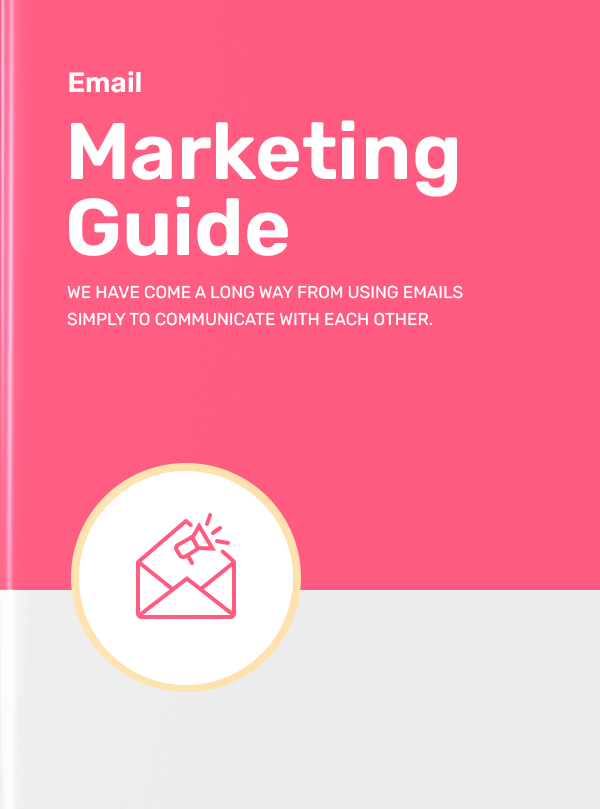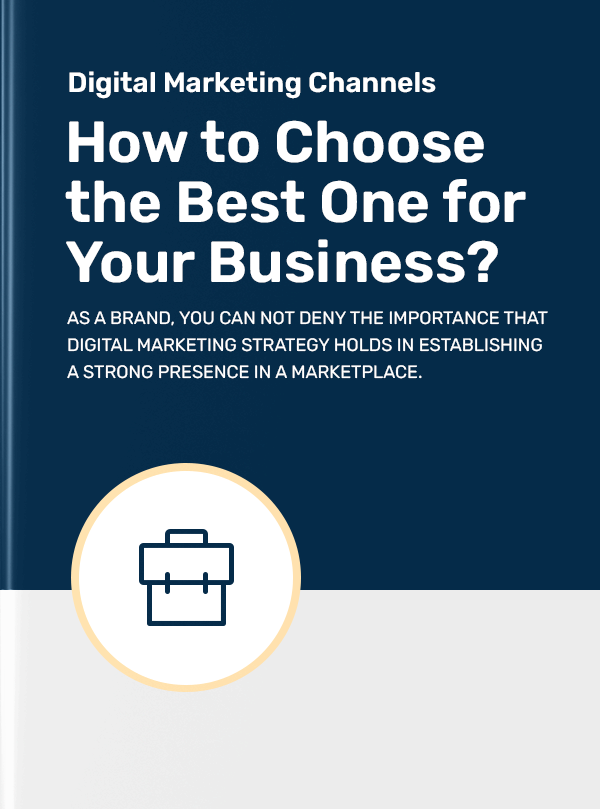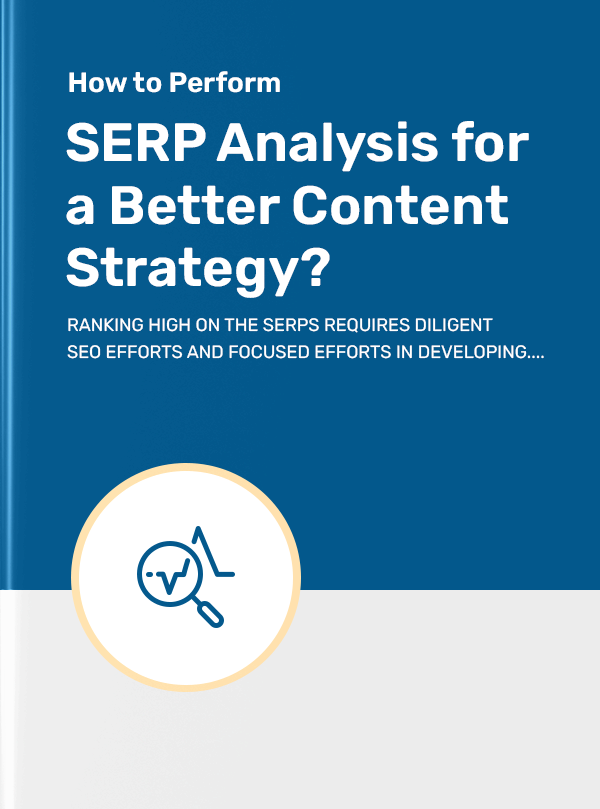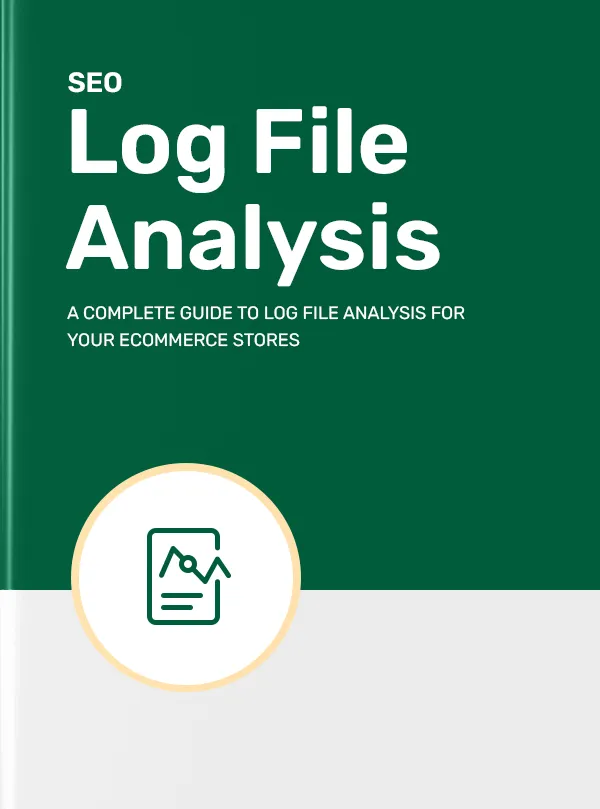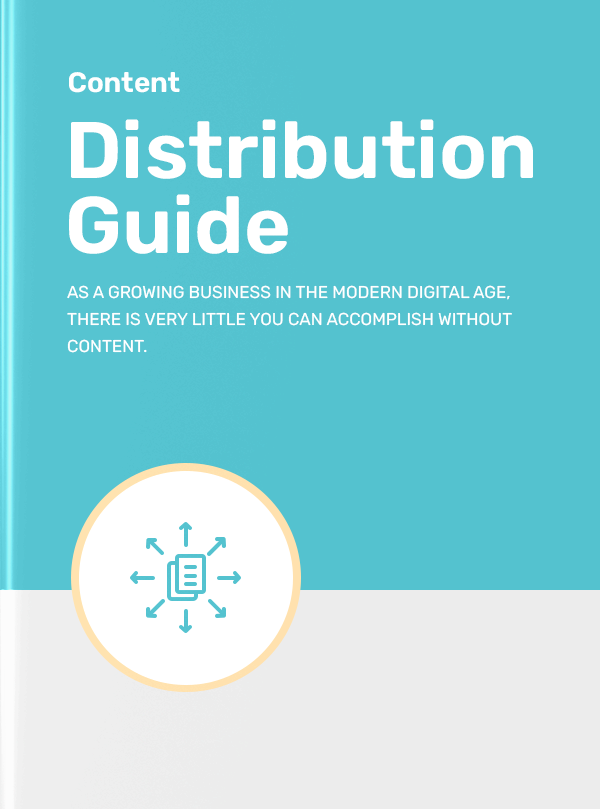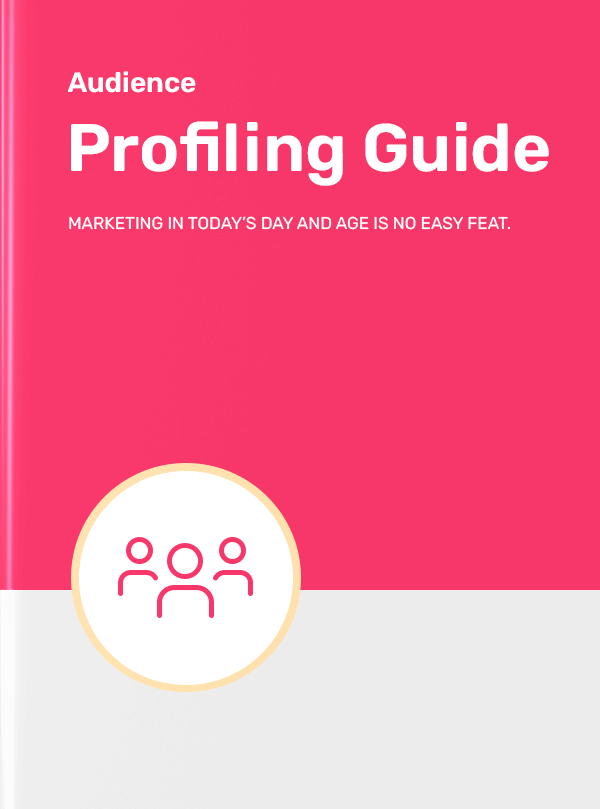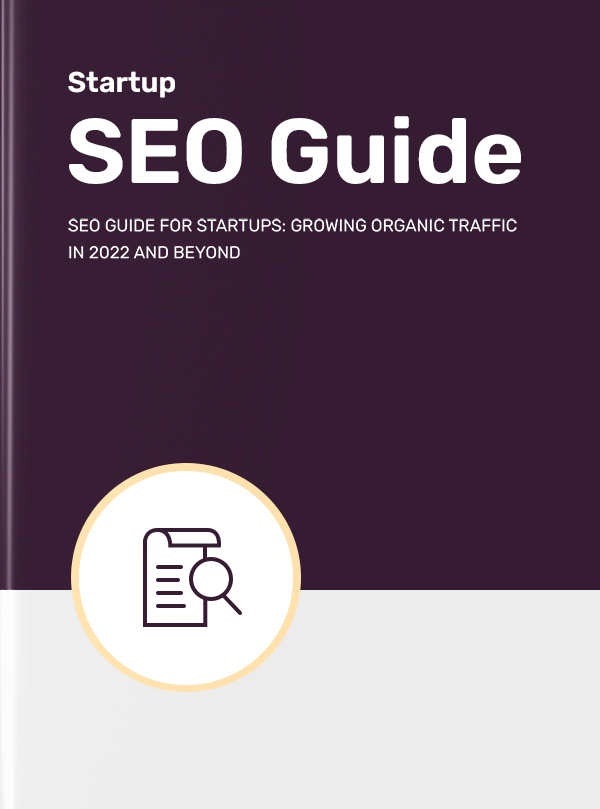If you are a business that is struggling to gain visibility on the SERPs, you have probably heard way too much about Google Algorithms, keyword research, ranking factors and what not!
Let’s face it — there are over 3.5 billion Google searches a day. Basically, there are a lot of queries that your business could tackle and potentially use to generate traffic and potential customers.
But ranking for a search query is easier said than done. Regardless of the industry you operate in, you will face some extent of competition on the SERPs. With that in mind, you will need to consider a powerful set of strategies and factors to rank.
But before we delve into what they are, let us understand what are Google ranking factors and why they are useful.
As a business owner trying to create a name for your brand in the online realm, you will always hear about aligning your efforts with the ‘Google algorithm’. In fact, most SEOs will tell you in more detail about how your website will suffer if you do not do so.
If you think these people are exaggerating — well, you might be wrong.
Ranking on Google is a goal for every website out there — small, medium and large. The only mystery that has eluded many of these businesses for a very long time is exactly which factors determine their ranking.
In case it all sounds a bit too mythical, let us assure you that Google ranking factors very much exist, and influence your website performance on the SERPs. Your ability to consider and implement these factors can make all the difference between getting your website ranked in the first few top organic results, and getting lost in the highly crowded Google SERPs.
Google’s ranking system is designed with the goal of fetching the most relevant and useful results for every user query. Some of the primary considerations of Google are:
- Meaning
- Context
- Quality
- Relevance
- Usability
While these are the main parameters, there are several ranking factors that fall within these parameters that can shape the way your website and content perform. These ranking factors also determine whether you are visible at all to your target customers when they search for a relevant query.
With these things in mind, let us look at the most prominent types of Google ranking factors you should know about.
Google has always limited information about the actual ranking factors that influence the performance of your website and content. But over the years, Google has released enough updates and information to narrow down the following factors that can rank a website.
On-Page Ranking Factors
On-page ranking factors are those that measure the quality of the on-page content, and all the keywords that are targeted in the website content. These include factors related to your website elements and content that can influence your SEO performance.
Technical Ranking Factors
Technical factors are those that decide how well your web pages are indexed, crawled and ranked by search engines. These factors refer to the technical aspects that you need to ensure in order for your website to rank higher on the SERPs.
Off-Page Ranking Factors
These are factors that are related to specific aspects of your website including endorsements from other websites and sources and have a lot to do with backlinks. In a nutshell, these are factors that impact your website but are not necessarily implemented on it.
Local Ranking Factors
Local ranking factors specifically apply to local businesses that have an online presence. These ranking factors include all three aspects that have been discussed so far, and other aspects such as reviews, listings and reputation management.
eCommerce Ranking Factors
Like local ranking factors, eCommerce ranking factors include a mix of the on-page, off-page and technical ranking factors. In addition to these, there are other specific factors such as product depth, product breadth, and details related to transactions.
Now that you know the various ranking factors that are considered by Google, and that you should keep in mind as well, it is time to delve deeper. Let us look at some of the major on-page SEO ranking factors one should keep in mind.
Relevant, High-Quality Content
For people who have dabbled in SEO and content marketing for a while, this one is a no-brainer. You may have already seen how well high-quality content can work in boosting your website rankings.
But did you know that there are quite a few considerations even within this ranking factor?
Well, firstly, it is not possible for just anyone to post anything on their website and get away with it. You need to understand what qualifies as relevant and high-quality content. The first consideration that you should have in mind in this regard is whether your content suffices the E-A-T criteria.
When you are posting content on your website, especially if you operate in a YMYL (Your Money, Your Life) niche, you will need to establish enough trust signals for Google to understand that your content is of high quality. Your content must demonstrate Expertise, Authoritativeness, and Trustworthiness in ample detail. Doing this contributes significantly to the ranking of your content and website on SERPs.
Not just this, you will need to ensure that you have incorporated highly relevant and performing keywords in your content. You will need to have high-quality content focusing on the relevant keywords that address the searcher’s intent and have them lead your content without going overboard. Stuffing your content with keywords will not help either.
Instead, mapping keywords to specific web pages and blog topics to match the user intent can be more effective than anything else.
Moving on, one of the most important tasks that you need to carry out to ensure that your content is fresh and relevant is to constantly update it. Imagine posting a blog on the trends in your industry in 2019 and then never updating it. In 2022, this piece of content will not generate any traffic at all due to the fact that it is simply not relevant to users anymore.
It is also a good idea to create visual assets for your business along with the textual content that you publish in the form of blogs or landing pages. Creating visual assets such as videos, infographics and flowcharts can not only improve the readability of your content but also boost engagement among readers. This indicates to search engines that readers are interested in and engaged with your content.
Talking about textual content, it is also important to ensure that you follow SEO best practices. Your content will drive most of your traffic and SERP performance, so it is a good idea to double-check whether you have covered the basics such as having the right keywords, optimised heading tags, meta tags and more.
This also means that it is vital to implement the best internal linking practices for your website content. Internal links can provide specific directions to search engines about how your website has been designed and how your content is organised.
HTML
So you wrote a high-quality blog that you are quite excited about — you are positive that people are going to love it and hence will Google. But in this excitement, you forgot to pay attention to the HTML tags you set for the blog and hit ‘Publish’ like there is no tomorrow.
For an SEO, this may sound like a nightmare, and rightly so!
You see, search engines like Google cannot read your content like a reader would. So, even the most important piece of content will need to have all the HTML tags defined to let the search engines know what the piece is actually about.
So, which HTML tags should you be paying attention to the most right now? Here are a few that are absolutely necessary:
- Title Tag: The title tag is absolutely necessary to define when you are finalising your content. This is because it is the most important anchor, appearing as a clickable link on the SERPs. Title tags are supposed to give a fairly detailed idea of what the page is about and it is what will help users decide whether they are likely to find the page useful.
So, if a user is searching for “laser clinic in Darwin”, these are the top organic results.
Do you see how effectively these title tags guide the user on what to find on the specific page? Moreover, you can also gauge the importance of optimising title tags on social networks based on how they show up on the SERPs.
- Meta Description: The second necessary HTML tag you need to set before you publish is the meta description tag. These are brief descriptions of 155-170 characters providing a brief summary of the webpage on the SERPs. They also guide the user and the search engine on whether the page is useful for a specific search query.
For the same example that we discussed in the previous point, here’s what the meta descriptions looked like —
You need to keep in mind at this point that these are not ideal meta descriptions. Ideally, they need to be more actionable so that they can prompt the user to click on them, and should not get truncated. But these can give you a good idea of their placement in the SERPs, and how they can help a user decide if they want to click on the page.
- Heading Tags: Your blog may be the most informative one out there on that specific topic, but the way you structure it will determine whether users actually have a delightful reading experience.
For this, you must divide entire paragraphs into headings and subheadings. If you already do that — Kudos!
But are you defining these subheadings as heading tags? If not, then you must start doing this right away. Your subheadings are not just for your readers but also the search engines.
Heading tags make it easier for search engines to crawl big chunks of text and organise your content, making it quite necessary to define.
- Image optimisation: Now, you have added all the headings, titles and descriptions required for your textual content, but what about your images? Have you optimised them correctly as per SEO best practices?
If you have added images to your content, you must define the Alt attributes for them. This text is displayed if the image is not loaded, and can even be used by people using a text reader. The Alt texts should be descriptive, include keywords, and align with the rest of the page content.
- URL Structure: Yes, you read it right — you absolutely need to optimise your URLs just as you do with your content. SEO-friendly URLs should ideally be simple, easily readable and include the primary keyword that the page is targeting.
For instance, if you have a page about thai food in Melbourne, having a URL like www.yourdomain.com/thai-food-melbourne will let the users know exactly what the page is about.
Structured Data
Search engines understand data, which can help them process any amount of information in no time. With that in mind, structured data refers to pieces of code that you can add to your website making it easier for search engines to read your web pages, index them and rank them effectively.
In a nutshell, structured data refers to organised data.
Structured data plays such an important role in SEO because it tells search engines what your website is about. It helps search engines understand more about your page, website and product so that it can be crawled and indexed easily.
Plus, structured data can help your website make it to the rich results, and assist search engines in displaying highly specific and relevant results raising the likelihood of getting more clicks.
Since we are talking about adding code, it may sound like a complex task to you. But with Schema.org, you can directly pick up pieces of relevant code, adjust it according to your business, and add it to your website — regardless of whether you are a coder.
User Experience
There is a lot that goes into making Google the greatest search engine ever — the way it is regarded today. Algorithms are truly the ones running the show behind the scenes. RankBrain is one such algorithm that defines the search engine that we see and experience today.
One important reason was that Machine Learning was introduced in Google Search for the first time, but the most important factor was its emphasis on user experience. After this algorithm update, Google basically started ranking pages based on their relevance to not just the search query but also the intent behind it.
Now, RankBrain was considered an important ranking signal for a long time, however, this has changed drastically over the years. More factors have come up and become more important.
While nobody conclusively knows the various aspects that are included in the RankBrain algorithm, it is safe to say that businesses would need to focus on the user experience they are providing on their website.
When asked, Google has always been a little mysterious about the algorithm and has specifically asked websites to focus more on users. This means that as long as your content addresses the right search intent of a specific keyword, keeps their goal in mind while curating the content, and adds elements that are likely to elevate the user experience — you are good to go!
We have talked quite a bit about the on-page SEO ranking factors, haven’t we?
But strap in, friends, because we have a lot more ground to cover in this guide.
Let's discuss the Technical SEO ranking factors now. They are quite a few and play a major role in improving your SEO performance and thus, your SERP rankings.
Let us dive right in!
Page Speed
Gone are the days when people would patiently wait for a slow website or webpage to load. Remember, there are ten other websites that would probably answer their queries faster. With that in mind, we need to discuss another crucial factor you can not ignore — page speed.
Google constantly emphasises user experience, and page speed contributes to that. After all, every second’s delay on your website will reduce your customer satisfaction by 16%.
Keep in mind that by page speed, we mean your desktop and mobile page speed. In 2018, Google announced that sites that do not load fast on mobile devices will be penalised. There are several steps that you can take to amp up your page speed.
To stay updated on how your website is performing in terms of page speed, you can use Google Search Console.
Mobile-friendliness
When we talk about Page Speed and measuring this specific metric on mobile devices, you may have already guessed that mobile-friendliness is no more optional. And you would be right!
According to Statista, 58.99% of the overall worldwide online traffic comes from mobile devices. If this does not convince you to make your website mobile friendly, how about the fact that Google now relies on a mobile-first index, which means websites that are mobile-friendly will be prioritised more?
Plus, at the risk of repetition, remember the importance of user experience that we have already discussed so much about?
To ensure that your website is mobile-optimised, use Google’s Mobile-Friendly Test. This test will give you a lot of insights into how your website is performing in terms of mobile-friendliness.
Keep monitoring your website for mobile-friendliness and take steps to ensure that your website delivers consistently great user experience even on mobile devices.
Core Web Vitals
tl;dr — Core Web Vitals are not a ranking factor.
But does this mean they do not play any role in your website ranking? Not at all.
Core Web Vitals determine the performance of your web pages with the help of real usage data. The metrics of Core Web Vitals are important because they directly influence your user engagement and business metrics.
Following are the metrics that come together to form Core Web Vitals:
Let us briefly understand what each metric measures for your web pages:
- Largest Contentful Paint (LCP): This metric measures your loading performance; specifically whether the largest element on your web page loads in less than 2.5 seconds.
- First Input Delay (FID): This metric measures interactivity; specifically whether the user is able to record their first input in under 100 milliseconds.
- Cumulative Layout Shift (CLS): This metric measures visual stability; specifically whether the unexpected movement of elements on the page is 0.1 or less.
Together, the Core Web Vitals determine the kind of page experience you are providing to your users. Even if your page hits the 75th percentile mark on all three metrics, your page would pass the Core Web Vitals test and be deemed as a page that delivers a great user experience.
The result? Your page is likely to be prioritised over the other web pages that do not pass the test and do not deliver the same level of page performance or user experience.
Website Architecture
Your website architecture can define the experience your users will have on your website, and the specific pages on it.
It is common knowledge that websites should ideally deliver the page that a user is looking for in 3-4 clicks. Any more than that, the user might get frustrated and abandon your website. Now, we don’t want that — so, creating a website architecture where all the parent and child pages are linked is essential.
The benefits of doing so are two-fold — your users will be able to find the web pages easily, and search engines will be able to establish links between web pages and crawl more pages on your website.
You can opt for a simple website architecture wherein you set the categories and subcategories strategically, or you can opt for a pillar-cluster model — either way you will need to monitor how your website is performing on Google Analytics and Google Search Console.
Site Security
Spam. Viruses. Malware.
We have all faced issues stemming from these security threats, in one way or another.
Regardless of whether you are running a BigCommerce online store or an informative website for your dental clinic, you need to amp up your website security to ensure the security of the information that your website visitors entrust you with.
Not to forget, if your website gets hacked or attacked, it is very difficult for smaller businesses to cope. Only 40% of businesses say that they are actually prepared to combat and handle cyber attacks.
More importantly, if your website gets attacked often, Google will take notice and it will affect your website rankings. Plus, if too many users report your website as unsafe, the search engines could potentially blacklist your website.
One of the primary steps you can take to safeguard your website is implementing the HTTPS protocol. Enable web hosting by buying a plan from a reputed company and change your password often. Beyond all of this, it is also important to keep monitoring your website security and improve it as you go.
Broken Links and 404 Errors
The other technical factor that you absolutely need to consider while optimising your website for better ranking is dealing with broken links.
Let’s face it — it would be unrealistic to think that you would not even have a single broken link out there. Especially if you have a comprehensive and heavy website, this is almost expected, but that does not mean you can have them in plenty.
Users are likely to get frustrated and pick an alternative website that is functioning normally over yours. Plus, broken links can negatively impact your conversion rates, as well as the way you pass link juice.
Similarly, users being constantly redirected or bouncing off your page because of a 404 Error, can definitely harm your SEO performance. But wait — not all 404 Error pages are bad. When used for specific pages that can not be redirected, these error codes let users know they should look elsewhere instead of wasting their time.
But when you conduct a technical SEO audit, it is not just important to fix broken links, and add 404 Error pages, but also to find ways to have fewer instances of them.
Optimise XML Sitemap
Sitemaps can play a crucial role in defining your website’s performance — SEO and otherwise.
Remember how we talked about the role of website architecture earlier? Well, sitemaps are how search engines understand what your website architecture looks like. Apart from this, sitemaps can also tell search engines a lot about your metadata and specific attributes — which you know by now play a very important role in your SEO performance too.
You can use plugins, and tools like Google XML Sitemap to generate a sitemap for your website automatically. You need to submit this sitemap to Google, to let the search engine know about the most important pages that should be indexed.
You should keep in mind that this does not guarantee that your website will be indexed as such, but it will help Google understand your site better while crawling it.
Optimise the Robots.txt File
Robots.txt file informs the search engine about the pages it can crawl and the ones it can not. No, this does not mean that your webpage will not be discovered by Google at all; this mechanism simply ensures that your website is not loaded with requests.
The main goal behind utilising this mechanism is to prevent Google from crawling and indexing pages that are not yet ready to make available to the public. You can also use it to prevent Google from crawling web pages that contain duplicate content.
To optimise your robots.txt files effectively, you will need to ensure that you have disallowed no pages that need to be crawled. Moreover, you must also ensure that the disallowed pages do not contain any sensitive information.
Since disallowing pages does not guarantee that they will not be crawled or indexed, you should have an extra layer of security to ensure security for such pages. You should also know the bots that the search engine that you are optimising for, uses to crawl websites.
Solve Redirect Loops
Your page redirects are created and implemented with all the good intentions but can end up frustrating users nevertheless if there is a vicious redirect loop tripping up your user experience.
There are quite a few steps you can take to fix this issue:
- You can clear the browsing data on your browser, or delete your cookies. This generally resolves redirect loops and helps you load the website correctly upon restarting the browser.
- Disable plugins or tools that you may have enabled for redirects — these are often the primary culprit for redirect loops.
- You may want to use a redirect-checking tool to determine the root cause of the loop and resolve it right away.
The ideal way to solve redirect loops depends on the primary issue causing it. Once you have this narrowed down, there are plenty of ways to fix the issue in no time.
Now that we have covered the on-page and technical SEO ranking factors, the next step is to identify and manage the off-page SEO ranking factors.
Backlinks
Backlinks act as evidence of your website’s credibility and authority in the niche in which you are operating. For instance, if you have a blog on backlinks, and we link back to it in this section, Google will consider you as a credible source of information that other websites trust and refer to.
Here are some of the main parameters that you should consider in optimising backlinks for your website’s SEO performance:
- Number of linking domains: Linking domains are the websites that link back to yours. This metric will pinpoint the number of domains that link back to yours. So, if you have five links from the same domain, the linking domain will still be counted as one.
- Do follow vs No follow count: If you are gaining backlinks, knowing whether they are do-follow or no-follow can make all the difference. Do-follow links are those that will pass on some authority to your website, and no-follow links will not pass on any link juice. So, having a count on each will tell you more about your backlink profile.
- Link Anchor text: It is not just the links; but also the text on which the link is placed that matters. Your anchor text should ideally contain a relevant phrase or keyword. Also, it is important to set this phrase as the anchor text while publishing the content.
- Relevance of links: For backlinks to fully contribute to your credibility and topical authority, they would need to be relevant. This means that the website for your law firm can not benefit by acquiring links from a plumbing website.
- Domain Authority: All of your backlinks and off-page content efforts are directed towards one goal — increasing your domain authority, and it is difficult. A higher domain authority means that your website is credible and an expert in the niche and a lower authority would suggest that you do not.
Simple enough, right?
But keep in mind that backlinks are only as good as the websites that you are getting them from. Bad backlinks can have the reverse effect, and can potentially damage your SEO performance and credibility just as well. Thoroughly check the websites that you are getting backlinks from.
With all of this information in mind, let us now look at what you can do to acquire backlinks to your website. A quick note — you will find several shortcuts online that you can use to acquire links, but opt for ethical approaches to avoid any heavy penalties.
Here are a few ethical strategies that you can use to get quality backlinks:
- Utilise HARO and become a source for reporters and journalists who are covering content in your niche.
- You can analyse authoritative websites in your niche for lost or broken links. If you feel like your blog or page is a better fit for that link, you can contact the publishers and ask for a link instead. Since websites do not want any broken or lost links, they would be more than happy to oblige as long as your content is relevant and of high quality.
- Create linkable assets such as infographics and checklists that can add more value to content published by authoritative websites. They have proven to be easy to acquire backlinks to.
Let us now look at the one categorisation of SEO that you need to be absolutely obsessed with if you are a brick-and-mortar business or serve customers in a specific geographic area.
Here are the primary local SEO ranking factors that influence your local SEO ranking:
Google Business Profile
Google Business Profile (GBP) is a platform that you can use to create a business listing for your brand. It is a tool that you can use to create and manage online listings that are presented by Google prominently on the SERPs.
Having a complete Google Business Profile listing will allow you to boost the visibility of your business on the SERPs and provide vital information to users who are looking for the services/products that you provide. It is important to keep the profile updated so that users can find the most recent and accurate information about your business.
Here are the primary details that you need to provide:
- Business Title: The official name of your business that customers can use to find you easily and get in touch.
- Categories: The main category in which your business falls. For example, plumbing, hospitality or any industry.
- Website URL: You should also add your website URL to your Google Business Profile so that users can easily visit your website and get the necessary information.
Your Google Business Profile will be created automatically as long as your business is running, even without your participation. In such cases, you will simply need to claim your business profile and update it with the latest information. You can register a new business and create a detailed profile if the listing for your business does not already exist.
Reviews
Social proof is more powerful than any other evidence that you can provide for your business, and the biggest example of this is the way reviews work. According to Podium, more than 93% of users base their buying decisions on online reviews.
It is definitely a powerful tool that you should be utilising for your local business. Now, let’s look at some of the key review platforms that you should be paying attention to.
- Google-based Reviews: With an updated Google Business Profile comes the perk of having an accessible platform where your customers can leave reviews for your business. Encourage customers to visit your Google Business Profile and leave a review for you — these are the reviews that are likely to get the most visibility.
- Third-Party Review Sites: You can also leverage third-party aggregator websites and directories to acquire reviews. For instance, websites such as Yelp and PureLocal are great platforms wherein you can ask your customers to post reviews. You can not only have a comprehensive listing for your business but also showcase your services, and areas of expertise, as well as attract reviews.
- First-Party Reviews on Your Website: The next area that you must concentrate on, for getting reviews is your own website. Your website in many ways is the front desk of your business, which empowers you to demonstrate your reviews to potential customers who visit your website.
- Factors of Reviews that Affect Search Engine Rankings: Not all reviews can have the same kind of impact on your search engine performance. It is important to understand the various factors that influence your search engine rankings and contribute to your SEO performance. Here are the ones that should be considered:
- Recency: Reviews should be recent and shed light on your brand’s current performance and customer experience.
- Velocity: The rate at which your business is getting reviews. Numerous reviews in a brief period might be perceived as suspicious.
- Diversity: Each review should be unique and distinct from the others. This factor effectively prevents false and redundant reviews from getting posted.
- Authority: The authority of the reviewer matters as well. A CEO or founder of a company posting a review about your B2B SaaS product will hold more authority than a person who may not even be a direct target customer.
On-page SEO
As highlighted earlier, on-page SEO is absolutely essential to your SEO performance and specifically to your search engine rankings. This holds true when you are looking specifically at ranking locally just as well. The primary aspects that you need to take care of in this regard are —
- Authority: Your website authority can determine how much importance or priority a search engine gives to your website while indexing and ranking it for relevant search queries.
- NAP: As a legitimate business, it is important to update your NAP details clearly and accurately on your website. Your customers should know how to reach you easily.
- Optimisation: We have covered all the different aspects that you should optimise in terms of on-page SEO. Ensure to cover all those aspects to stand a better chance of ranking higher on the search engine.
- Local Content: If you are a local business or a business that operates at a physical location, it is also important to have enough local content to target customers from your geographical area.
- Technical Issues: An SEO audit or a detailed technical SEO audit is important to ensure that all the technical aspects of your website are in order and that there are no pending issues or errors that can derail your user experience.
Citations
Building online citations can have a major impact on your local business performance and can make all the difference between potential customers discovering your business and not. In order to ensure that your citations are working for your business, you will need to consider the following parameters:
- Accuracy: While building citations for your business, you need to take extra care to ensure that all the information is accurate and up-to-date. Mismatch in citations on various platforms can be misconstrued by users and search engines alike.
- Distribution: You should have citations on various online directories and platforms to cover more ground. Not to forget, this kind of distribution will let the search engines know that your business is accessible to various platforms.
- Quality: The quality of your citations matters just as much as the level of accuracy and distribution that you can ensure. There is no point in having a citation that points to a lost or removed page. Ensure to conduct audits at regular intervals and update your citations whenever necessary.
- Relevance: Ever clicked on an anchor that seemed useful, only to discover that it redirects you to another less relevant page? It is important to ensure that this situation does not arise with your citations.
Backlinks
Backlinks are as important for your local SEO as they are for your SEO strategy and performance in general. A backlink is basically like another website giving you their vote of confidence on your credibility and knowledge.
- Domain Authority: Once again, the domain authority of the website that is linking back to you is an important factor. Acquiring links from low-authority websites will not be very useful, and doing so from unreliable sources might end up getting your website penalised.
- Quantity: The number of backlinks on your website could of course be a major factor as well. More the backlinks, the better the chances of that particular piece of content on your website ranking for a relevant search query.
- Relevance: Needless to say, your backlinks need to be relevant. There is no merit in acquiring backlinks from websites that are not at all relevant to your niche, from the SEO angle or otherwise. Think about it, having backlinks on a website that have a different target audience will not add value to your SEO efforts or business.
- Link Anchor Text: It is important to have a relevant anchor text when you are acquiring a backlink — only then it will redirect the right users to your website. If a user clicks on anchor text that says “influencer marketing strategies” but is redirected to a page that talks about PPC advertising, they are likely to abandon the page instantly.
Behavioural Signals
At any point of time in your SEO journey, it is important for you to consider the behavioural signals that your website and your SEO strategy are sending out to search engines. Google also considers the following behavioural signals while ranking a specific page or website for a relevant search query:
- Click-Through Rate (CTR): Click-through rate is generally associated with PPC advertisements, however, in SEO, this metric suggests the ratio of the number of clicks your link is being clicked on the SERPs to the number of user impressions.
- Dwell Time: This one is an important metric — it measures the amount of time a user analyses your webpage before returning to the SERPs. A low dwell time suggests that your content did not match the user’s search intent, and a high dwell time suggests that they found it useful.
- Clicks-to-Call: Herein comes the importance of strengthening your local SEO. Clicks-to-call measures the number of times the user clicked on an object or element to call your business directly. This measures the number of leads you have generated through a specific webpage.
- Clicks-for-Directions: Some customers would want to visit your business or office instead of calling you. So you need to measure the number of times a potential lead clicks on an object to open their Maps application directly to view directions to reach your business.
- Clicks-to-Site: The final measure is the number of times a specific link to a landing page or webpage on your website, on a social media profile or on other platforms.
Local Content
Of course, technical parts and other SEO elements are of utmost importance when you are setting up an online presence for your local business. But let’s not forget the aspect that is in the driving seat in this journey — localised content.
When you are implementing a comprehensive local SEO strategy, you can not undermine the role that local content plays in making your website visible to the local community on the SERPs.
With this goal in mind, you want to ensure that you include location pages, and maybe even a location-specific landing page. Such pages would inform the users landing on the page about the specific features and services that you offer in that location.
Moreover, you may also want to have blogs addressing the services or specifications of that location. Lastly, you should have a detailed contact page, with the necessary information that a potential customer should know to get in touch or visit a location-specific office.
To amp up your content efforts targeted at empowering your local SEO strategy, you can also have dedicated videos or content in other formats demonstrating how your business operates in a geographical location.
By now, you would know all about ranking your website or webpage higher on the SERPs, whether your business is targeting a local or global audience. Let us now look at the top SEO ranking factors that you need to consider as a business wanting to climb up the SERP ladder.
Quality Content
The primary on-page SEO ranking factor that we discussed at the beginning of this guide, is one of the most important SEO ranking factors. Consistently producing, optimising and publishing SEO-friendly and useful content can help in taking your brand right to the top of the SERPs.
Backlinks
Your backlink profile as discussed earlier could make or break the credibility and authority of your website. Ensure to keep acquiring links to content that you think is truly valuable from high domain authority websites. Give a wide berth to websites that might seem too spammy or suspicious.
Keyword Placement
It is also important to check whether keywords are placed appropriately within your website content. For one thing, you will need to ensure that you have dedicated pages getting indexed and ranked for high-performing keywords, and that relevant keywords of various search volumes are added to your content.
Image Optimisation
It is a good practice to add images to your content so that your readers can remain engaged and their experience is guided. But these images need to be optimised for SEO by adding elements such as an optimised filename, and Alt-text. You should also resize the images to ensure that they do not interfere with your website’s overall speed and performance.
URL Structure
Apart from double-checking the meta tags associated with your content, it is also important to define a URL structure that stays consistent, and simple enough to make browsing simple for users. Your URLs should tell users what your page is about, and be optimised to contain the focus keyword.
Page Speed
The speed of your web pages should not be compromised at any cost. For this, you need to conduct regular speed audits and do away with elements that are slowing down your website.
Mobile-Friendliness
With the mobile-first indexing approach of Google, making your website mobile-friendly is not at all optional. Ensure that the content and all the elements of your website function as effectively on mobile devices as they do on the desktop.
Core Web Vitals
These metrics that highlight the experience you are delivering from the user’s point of view are absolutely essential considerations while optimising your web pages and website. Keep measuring and tweaking your website to deliver the best user experience possible consistently .
Site Architecture
How you build your website will decide the amount of priority the search engines and potential customers and users will assign to your site. Ensure that the site architecture is clearly branched out and interlinked, and let the search engine know by submitting a sitemap.
Site Security
Regardless of the business vertical you operate in, ensuring the security of your website should be at the top of your list. Right from the beginning, implement protocols and mechanisms required to safeguard your website as well as the information that you collect from users and customers.
And that’s all.
We have now looked at the most important ranking factors that you would need to consider as a business to rank higher on SERPs. We have narrowed down the most crucial ones that you will need to get a head-start on your efforts. Once you have successfully implemented these factors, there are many other tweaks that you can make to position your website for SERP success.
And if you need some extra help with navigating your SEO strategy and getting your website ranked, feel free to get in touch with us.
1. What are the 3 most important on-page SEO factors?
The three most important on-page SEO factors are high-quality and useful content, user experience, and having optimised meta tags. Apart from these factors, it will also bode well to add the right structured data to your website code.
2. What are the 4 important stages in SEO?
The four important stages of SEO include on-page SEO, off-page SEO, technical SEO and local SEO. Depending on your business, you will need to apply a combination of these techniques to strengthen your overall SEO strategy.
3. What are the three stages of ranking SEO?
The three stages of SEO ranking are discovery, relevance and authority. This means that first, you will need to work on getting your website crawled and discovered, then get it indexed for specific keywords or search queries, and then build authority for the page or website, so that it is ranked higher.
4. How many Google ranking factors are there?
Google has over 200 ranking factors in their algorithm that drive the way your website may be ranked and perform on the SERPs.
5. What is the most important Google ranking factor?
Having valuable and high-quality content proves to be the most important ranking factor. While many factors come into play when you want to make a website rank higher, content drives all your efforts and proves to be an important factor in determining your ranking for a specific keyword.
